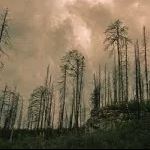“Red tape” could slow Montana firefighting efforts, but funding the bigger issue
Posted: November 16, 2017Source: KPAX.com BY – KPAX · IMAGE BY VICTOR ZASTOLSKIY / DREAMSTIME.COM

Image from: Victor Zastolskiy,Dreamstime.com
MISSOULA – Firefighting is entering a new era, as fire crews face blazes with greater intensity and fewer resources.
But the experts who are wrestling with the fire problem say there’s no “one size fits all solution”, and “red tape” and court cases aren’t necessarily at the top of the list.
With over a million acres charred this summer, the debate is on over what to do next year, or the years after that.
Senator Jon Tester (D-MT) continues to support a plan separating U.S. Forest Service funding to firefighting and timber management. Senator Steve Daines (R-MT) and Representative Greg Gianforte (R-MT) press legislative changes to block what they call “frivolous lawsuits” to allow more logging.
But the experts on the front lines are more worried about using tools they already have, with a more “focused” and “sophisticated” approach — and less money.
“The numbers and types of resources that we have today pale in comparison perhaps to what we did have. Gone are the days when we could overwhelm a fire with ‘mass’. We simply don’t have enough firefighting resources to do that,” said Greg Poncin.
Poncin, who just retired as head of the Northern Rockies Incident Command Team, has dealt with all the big fires — the Sawtooth, Lolo Creek, Roaring Lion, Lolo Peak Fire and Rice Ridge.
He was part of a recent forum sponsored by the new online magazine “Treesource” where the common theme is we aren’t using any of the tools to their full ability.
“We really aren’t going to have to compare just thinning, or just logging, or just burning or just climate change. It’s the milieu of all of those things we need to consider,” said USFS Fire Sciences Laboratory Manager Colin Hardy.
“So we don’t have to argue about which individual one of those is best. We have to work together and co-manage to try to make thinning and burning and prescribed fire work for us, particularly in Western Montana,” Hardy added.
“Right now there are not the resources necessary to go and do as much burning as is wanted, or as much fuel treatment as is desired. The Forest Service is spending all of their money fighting the fires,” commented Sarah Coefield with the Missoula City-County Health Department.
Timber harvests are down from historic highs in the 1960s through 1980s, nationwide — not just in Montana. Lawsuits stopped some cutting while shifting global markets stopped others. Companies once active in the Northwest moved to places like New Zealand, or the southeastern U.S. where trees are easier to reach and grow faster.
Less logging means less money for the Forest Service. But thinning and other operations have progressed. Few, if any recent projects on the Bitterroot have been challenged in court.
But getting planned projects going is harder, such as the Westside Collaborative Project in the Bitterroot, which had been aimed at cutting fire risk before Roaring Lion.
With less cash, firefighters are becoming more tactical, protecting homes, building “shaded firebreaks” to corral fires, keeping crews safer, “and I see that as a tactic that we’re going to use more and more to manage the effects of fire, not simply put it out,” Poncin said.
There-in lies the “new” approach. Using geography and the available tools, and being comfortable with that.
“We need to take account for management actions that we’ve done in the past, impacts that we’re having on the landscape and think hard about what we value, why we value that and how that varies across the landscape,” said University of Montana fire ecologist Phil Higuera.
“We need to treat the landscape appropriately and use every opportunity we have to take advantage of the tools in the right place, at the right time,” added Lewis & Clark National Forest supervisor Bill Avey.
While that broader debate continues over forest lands management, the experts say there is something you can do right now to get around red tape and that is making your property fire safe.
Homes are still being lost through carelessness, like landscaping or a woodpile stacked too close — and there’s a push to get more people living in the Wildland Urban Interface to help manage their own timber stands.
“But we’re not treating nearly enough acres too significantly affect our fire risk. So I propose we need to be doing a lot more thinning and logging with a fuels reduction objective,” said Matt Arno, a forestry consultant with Woodland Restoration.
While the fires have cooled, the political rhetoric heats up. And getting people to trust each other, and the fire agencies, deciding how to “live with fire” in the face of bigger fire years is what this group sees at the top of our “to do” list in Montana.
“It’s that stress. It’s fear, frustration, anxiety that fuel the emotions of those impacted,” Poncin said.
“Regardless, it’s about social license — it’s about understanding the dynamics of the ecosystem we’re in. Understanding the values or ourselves and our neighbors and then collectively developing solutions to the situation you find yourself in,” Avey added.
“Fire has been here. We’re the ones that have come. And we need to so the treatment we need to do in order to make it and environment that we can live successfully in,” Avey said.
